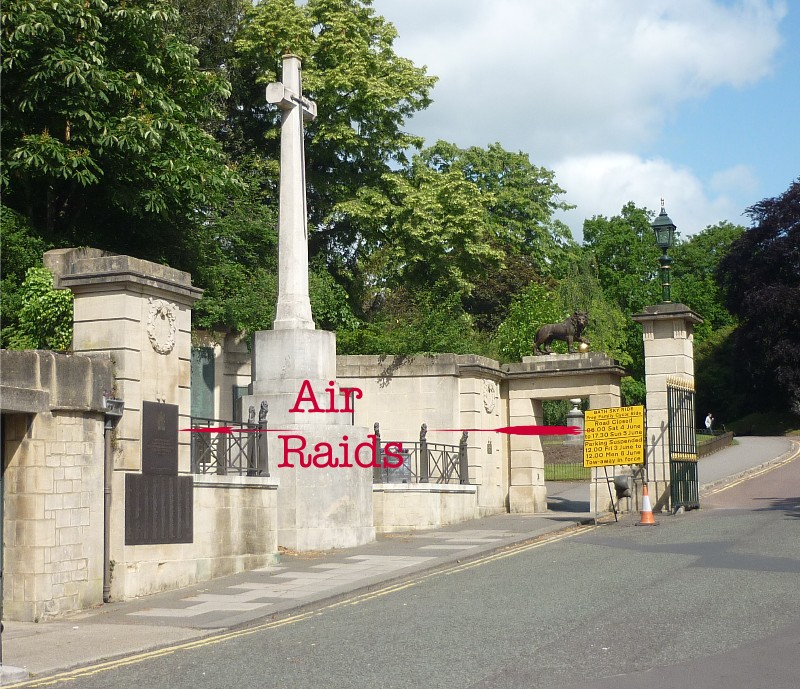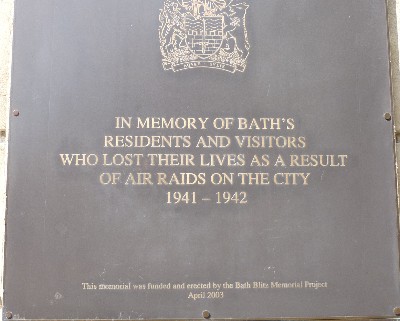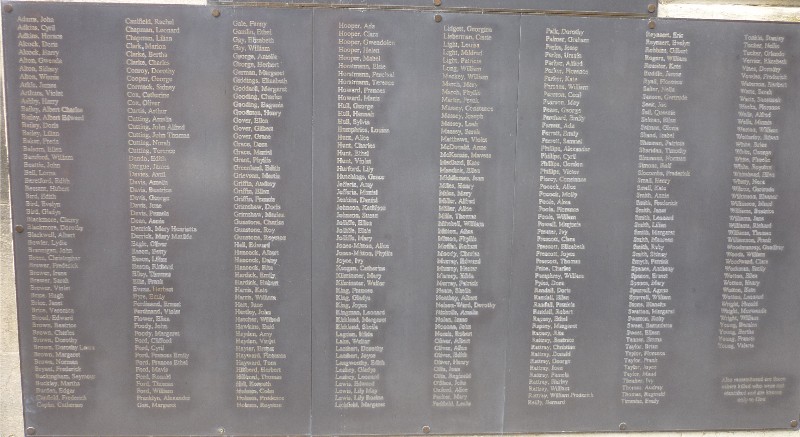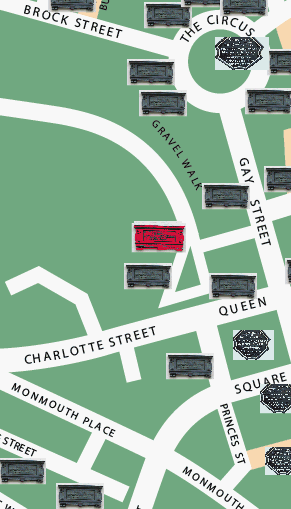Baedeker Raids - War Memorial
What were they?
Wikipedia:
The
Baedeker
raids
were
conducted
by
the
German
Luftwaffe
Luftflotte 3
in two periods between April and June 1942. They targeted
strategically
relatively unimportant but picturesque cities in England. The
cities
were reputedly selected from the German Baedeker Tourist Guide to
Britain, meeting the criterion of having been awarded three stars,
hence the English name for the raids. Baron Gustav Braun von
Stumm, a
German propagandist is reported to have said on 24 April 1942
following
the first attack, "We shall go out and bomb every building in
Britain
marked with three stars in the Baedeker Guide."
What was the effect on Bath?
"High explosive bombs...killed over 400 people, totally destroyed
329
houses and shops, wrecked 700 more so severely that they had to be
demolished and inflicted some degree of damage on at least 1900
buildings." [
Rothnie 1983]
Although most of Bath's famous buildings were damaged to some
extent (
Queen Square,
Assembly Rooms,
Circus,
Royal
Crescent), much damage was caused to residential areas,
where loss of life was considerable. A
Memorial Garden has been
established
in Shaftesbury Road.
The majority of those killed were buried in mass graves at
Haycombe Cemetery on the
outskirts of Bath.
On the city's main
war memorial
at the
eastern entrance to Royal
Victoria Park there is a plaque engraved with names of all those
known
to have lost their lives during the raids:

The smaller plaque contains the following dedication:

The text reads
Upper plaque:
"In memory of Bath's residents and visitors who lost their
lives as
a result of air raids on the city 1941-1942
This memorial was funded and erected by the Bath Blitz Memorial
Project April 2003"
The larger plaque contains the names of those identified:

Location of
War Memorial:

(c) 2011
Bath-Heritage.co.uk | Contact us|




